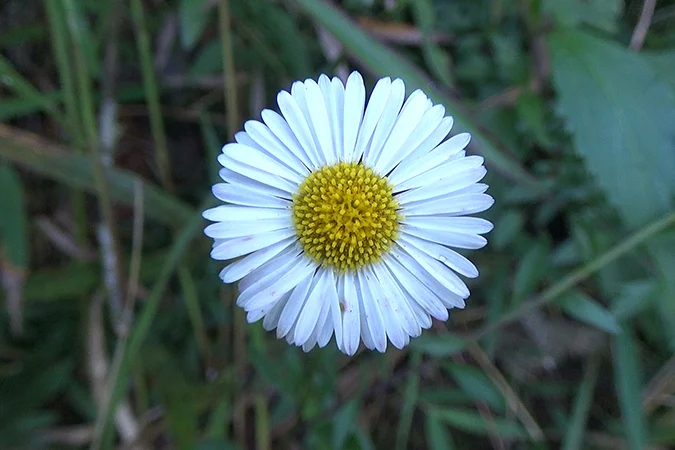Santa Barbara daisy (Erigeron karvinskianus) is a species of plant in the Asteraceae, a low shrub with erect or fallen stems, having branches, growing creeping on the ground or rock cliffs, elongated leaves and white and yellow disc flowers.
E. karvinskianus has a stem that grows from the rhizome, strong, erect or fallen, cylindrical, elongated and slender up to 15 cm, has branches, old green or reddish brown, young green and white hair.
The leaves grow in rows along the stem, forming a spiral panicle, elongated, pointed tip, a vein in the middle, green and white hair. Flowers grow at the end of the stem, white disc-shaped with yellow in the middle
Santa Barbara daisy grows on forest floors, rock cliffs, often grows in cracks in walls or paving and quickly spreads to carpet flowers as large colonies.
Kingdom: Plantae
Phylum: Tracheophyta
Subphylum: Angiospermae
Class: Magnoliopsida
Order: Asterales
Family: Asteraceae
Subfamily: Asteroideae
Tribe: Astereae
Subtribe: Conyzinae
Genus: Erigeron
Species: Erigeron karvinskianus
E. karvinskianus has a stem that grows from the rhizome, strong, erect or fallen, cylindrical, elongated and slender up to 15 cm, has branches, old green or reddish brown, young green and white hair.
The leaves grow in rows along the stem, forming a spiral panicle, elongated, pointed tip, a vein in the middle, green and white hair. Flowers grow at the end of the stem, white disc-shaped with yellow in the middle
Santa Barbara daisy grows on forest floors, rock cliffs, often grows in cracks in walls or paving and quickly spreads to carpet flowers as large colonies.
Kingdom: Plantae
Phylum: Tracheophyta
Subphylum: Angiospermae
Class: Magnoliopsida
Order: Asterales
Family: Asteraceae
Subfamily: Asteroideae
Tribe: Astereae
Subtribe: Conyzinae
Genus: Erigeron
Species: Erigeron karvinskianus
